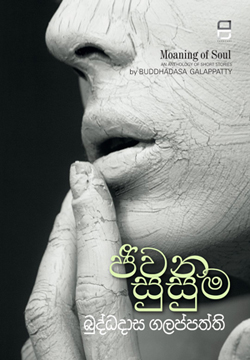A gentle but startling jolt to middle-class complacency
View(s): There is no doubt that Buddhadasa Galappatty’s Jeevana Susuma (Life’s Sigh) will be popular; it reads like a breeze, so swift active and enlivening – but it can also be a Duruthu breeze, piercing the skin of the readers who confine themselves to English newspapers and the wondrous volumes lavishly praised.
There is no doubt that Buddhadasa Galappatty’s Jeevana Susuma (Life’s Sigh) will be popular; it reads like a breeze, so swift active and enlivening – but it can also be a Duruthu breeze, piercing the skin of the readers who confine themselves to English newspapers and the wondrous volumes lavishly praised.
I quote from the Sunday Times September 20th 2009:
“In 1845 a brilliant young Jew who was later …. Prime Minister of England wrote a novel … Sybil: or the Two Nations because the whole purpose of the book was to bring home to his readers that there was not one English Nation but two.
“Two nations” said one of Disraeli’s characters “between whom there is no intercourse and no sympathy; who are as ignorant of each other’s habits, thoughts and feelings as if they were inhabitants of different planets; who are formed by different breeding, are fed by different food, are ordered by different manners.”
“These words were written about 19th Century England, but might they not with even greater truth be applied to 20th Century Ceylon? During the hundred and thirty years of British rule there grew up indeed two nations – the nation of the urban English educated and the nation of rural Sinhala speakers …. between whom there was indeed no intercourse and no sympathy”.
In the 21st Century we have an elite intensely sympathetic to elephants (both humans and elephants die in unexpected unpleasant ways but elephants do not have to mark calendars and worry about educating offspring, paying rent and electricity bills). Galappatty has a thinner skin than our young magnates who sip and nibble as they damn import restrictions which deprive them of their favourite toiletries.
I am impelled to quote Wimal Dissanayake’s acute and sensitive assessment of this book (Stories of loss and deprivation in Daily News March 24) which highlights Galappatty’s concerns: “He wishes to enlarge our social awareness and direct our attention towards a social vision that is adequate to the turbulently intricate times … His fictional imagination has a moral edge to it.”
In a review of Thuru Liya Akuru Viya I wrote:
“There is a deep affinity of spirit between the work of Wordsworth and Galappatty, … an equally intense response to the consciousness of human suffering; Wordsworth’s description of the pale little girl who knitted listlessly as she herded sheep .… Galappatty’s child who runs to sleek limousines heading for holidays in the hills, vainly proffering a fistful of flowers for sale are moving and discomforting…”.
In these ten stories Galappaty utilizes a sinewy Sinhala that cuts through lulled middle-class complacency to startle us with “the lightless depths that beneath them lie”, such as the living conditions of Manjula/Suddhi, the victim of her beauty, days when no customer accosts her and she and her two small daughters from a brief secure marriage, sleep on empty stomachs to wake to hunger. He captures the desperation of Sirimal, a youth tortured by clogged hope. His parents, sister and he survive on what his ageing mother earns at the quarry “sitting so long with the sun beating down, I thought I might collapse”. His only desire is to pass the O’Level, to earn and help his family; but he cannot study because his father, a drunken idler curses in filthy language and bawls out old songs. Frantic as the exam draws near, he puts an entry against his father at the Police Station “Sir, can’t father be kept here for three weeks?”
The pandemic which prompts the introductory poem:
“I lie awake at night seeing the sorrows enfolding humans” disturbs the writer. He depicts Gunaruwan agitated by his fears for his children and his impending problems. Gunaruwan is conscious of his seventy years and high blood pressure. Sleep eludes him.
“Wilbert, shall we see the doctor?”
“What if he says to stay in the hospital?”
Gunaruwan is silent; the two dogs were whining as if aware they were to be abandoned and die of starvation.The story ends: the author leaves us starkly aware of “The heartaches and the thousand natural shocks that flesh is heir to”.
Jeevana Susuma is delightfully companioned by the fourth issue of Kavimihira (The Sweetness of Poems). Since 2012 Galappatty has edited four collections of the best poems that appeared in Sinhala newspapers with commentaries helpful in guiding the taste of readers and the skill of writers. As an anthology it has a wide and absorbing range to offer from the robust tragi-comic hopefulness of Umaoya Nirmali’s enjoyable love and language to the acute bitterness and emotional impact of Sammani Weerakoon’s searing ‘no fistful of mustard’ (aba mita knosoyami). We have powerful poets in Sinhala and Kavimihira gives them good exposure.
| Book facts | |
| JEEVANA SUSUMA by Buddhadasa Galappatty Reviewed by Dr. Lakshmi de Silva |



